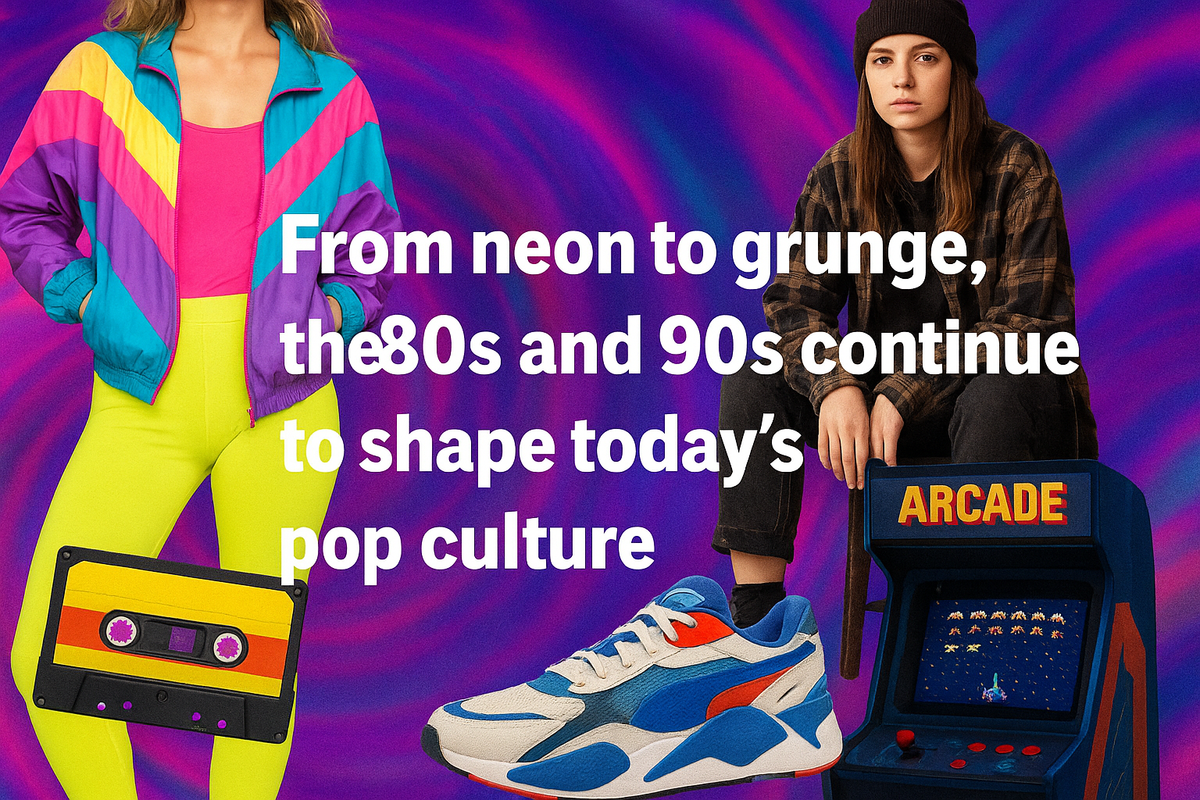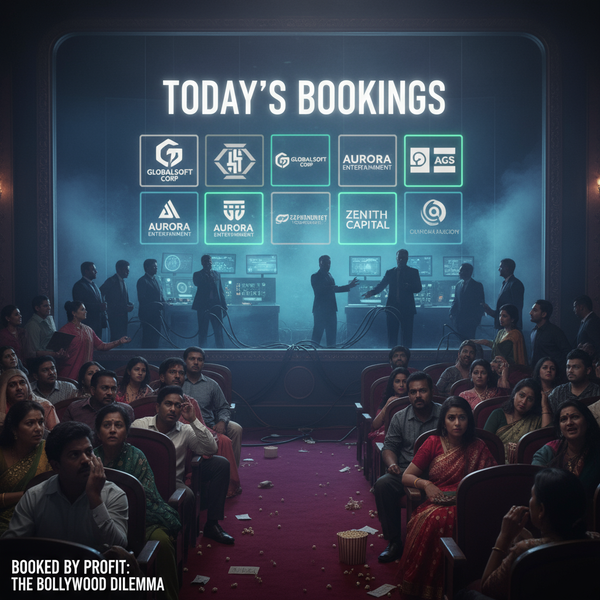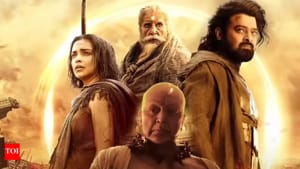Retro Revival: Why 80s and 90s Nostalgia Still Dominates Pop Culture
From neon fashion to mixtapes and sitcom reboots, the 80s and 90s remain pop culture’s heartbeat in 2025 proving nostalgia isn’t just memory, but a timeless cultural force.

Introduction: Back to the Future of Culture
Walk into a fashion store, scroll through TikTok, or watch the latest streaming series, and you’ll see it: the unmistakable return of the 1980s and 1990s. Neon windbreakers, chunky sneakers, cassette-inspired playlists, sitcom reboots, arcade-inspired video games, and even scrunchies are everywhere. What once felt outdated has now become timelessly cool.
Pop culture today isn’t simply looking forward; it’s looking backward with a playful wink. Nostalgia for the 80s and 90s has created a cultural revival that stretches across music, fashion, film, gaming, and even advertising. But why now? Why are we so collectively obsessed with revisiting these decades?
To answer this, we need to explore how technology, fashion, music, and generational cycles collide to fuel this retro resurgence.
The Emotional Power of Nostalgia
Nostalgia is more than just longing for the past it’s a psychological anchor. Studies show nostalgia creates comfort, boosts mood, and strengthens identity. In turbulent times, people naturally gravitate toward familiar eras.
The 80s
- were marked by bold colors, synthesizers, MTV, and the rise of consumer culture. They represent optimism, fun, and excess.
The 90s
- brought grunge, minimalism, hip-hop’s explosion, and the dawn of the internet age. They represent rebellion, experimentation, and authenticity.
In 2025, as people face economic uncertainty, digital overload, and constant change, these decades feel like safe zones touchstones of a more “simpler,” joyful time. Nostalgia becomes not just entertainment, but emotional self-care.
Fashion Flashback: Why Retro Clothes Rule Today
Fashion is often the most visible marker of nostalgia, and the 80s and 90s are having a huge moment.

- The 80s Influence: Oversized blazers, neon workout gear, high-waisted jeans, and bold geometric patterns. Luxury brands like Balenciaga and Gucci have revived these silhouettes.
- The 90s Comeback: Minimalist slip dresses, bucket hats, grunge flannels, Doc Martens, and sportswear logos (Nike, Adidas, Fila). Y2K aesthetics (think metallics, rhinestones, butterfly clips) are also back.
- Streetwear & Retro Mashup: Retro sneakers like Air Jordans and Adidas Superstars are reissued with modern twists, becoming must-have collectibles.
What’s interesting is how Gen Z, who never experienced these decades firsthand, wear them with fresh eyes. To them, retro isn’t recycled it’s discovery.
Music: Synths, Mixtapes, and Throwback Beats
Music has always been cyclical, and the 80s/90s revival is louder than ever.
- The 80s Sound: Synthpop, new wave, and disco beats have resurfaced in hits like The Weeknd’s Blinding Lights or Dua Lipa’s Future Nostalgia. Producers sample vintage synthesizers to recreate that era’s signature sound.
- The 90s Spirit: Hip-hop’s golden age and 90s R&B are referenced in new tracks, while alternative bands echo grunge guitar riffs. Vinyl sales once thought dead are booming, with many buying 90s classics.
- Cultural Memory in Streaming: Spotify and Apple curate throwback playlists that dominate streams. Even young listeners binge “90s hip-hop” or “80s classics” alongside modern hits.

The mixtape culture of those decades creating a soundtrack for life is alive again through curated playlists and TikTok sounds.
On-Screen Nostalgia: Reboots, Revivals, and Retro Storytelling
Hollywood knows nostalgia sells, and the 80s and 90s are a gold mine.
- Reboots & Sequels: From Ghostbusters: Afterlife to The Fresh Prince of Bel-Air reboot, classics are being reimagined.
- Stranger Things Effect: Netflix’s Stranger Things wrapped audiences in 80s references — arcades, Walkmans, Dungeons & Dragons and reignited global love for the decade.
- 90s Sitcom Renaissance: Shows like Friends and Seinfeld are streaming hits for new generations, proving timeless comedy still works.
- Visual Style Comeback: VHS filters, grainy footage, and retro title fonts are used in music videos, ads, and films to invoke nostalgia.
Audiences crave not just stories, but the feeling of eras when pop culture was simpler, before streaming fragmented everything.
Gaming: Pixels, Arcades, and Retro Consoles
Gaming is another arena where the past thrives.
- Retro Consoles: Nintendo re-releases like the NES Classic Edition sold out instantly. Sega, PlayStation, and others are repackaging classics for nostalgic adults.
- Arcade Influence: Retro-styled indie games like Celeste and Streets of Rage 4 mimic pixel art and 80s arcade aesthetics.
- 90s Franchises Live On: Pokémon, Sonic, and Mario are still cultural juggernauts, thriving across both nostalgic gamers and new audiences.
Retro gaming taps into the joy of simplicity less about hyper-realistic graphics, more about fun and creativity.
Marketing and Branding: Nostalgia Sells
Brands know nostalgia is a marketing superpower.
- Retro Ads: Pepsi and Coca-Cola frequently re-release vintage packaging. Nike drops “retro editions” of sneakers that spark frenzy.
- Pop Culture Collabs: Fast-food chains team up with 90s icons (like McDonald’s + Pokemon cards).
- Music in Ads: 80s hits are licensed in commercials to trigger instant recognition and good vibes.
Nostalgia-driven campaigns are not just about selling products; they sell feelings of familiarity and comfort.
Technology’s Role in the Revival
Ironically, the future is what keeps the past alive.
- Social Media Trends: TikTok dances to 80s tracks or “What I’d wear in the 90s” videos go viral daily.
- AI and Filters: Apps recreate VHS effects, cassette sounds, and pixel art.
- Streaming Libraries: Easy access to decades of old content means younger audiences binge retro culture effortlessly.
Technology gives the past infinite replay value. In a way, the internet turned nostalgia into an endless cultural loop.
Generational Cycles: The 30-Year Rule
Pop culture often revives every 30 years when children of a decade grow up and reclaim their youth.
- In the 2010s, we saw a 1980s boom.
- In the 2020s, the 90s dominate.
- Soon, the early 2000s will be next in line.
This cycle is less about exact replication and more about reinterpretation taking what was iconic and reshaping it for the present.
The Globalization of Nostalgia
What’s unique in 2025 is that nostalgia isn’t limited by geography. Streaming and social media globalize retro culture.
- K-Pop Meets Retro: Groups like BTS and NewJeans incorporate 80s/90s fashion and beats into their music videos.
- Bollywood’s 90s Revival: Indian cinema reimagines 90s-style romances and songs for new audiences.
- Cross-Cultural Appeal: Vintage Levi’s or Converse sneakers are status symbols from New York to Tokyo.
The retro revival is a worldwide language of shared cultural memory.
The Psychology of Comfort in Uncertain Times
The popularity of 80s and 90s nostalgia is not just style it’s survival.
In times of political turmoil, climate anxiety, and rapid technological change, people cling to cultural eras that feel stable and joyful. Rewatching a 90s sitcom or playing a retro video game offers comfort like revisiting childhood.
This is why nostalgia endures: it isn’t about rejecting the present, but about carrying the warmth of the past into today.
Critics: Is Nostalgia Limiting Creativity?
Some argue that constant revival prevents innovation. Do we risk recycling endlessly instead of creating new icons?
- Hollywood reboots may feel repetitive.
- Retro fashion cycles could overshadow bold new trends.
- Music producers risk overusing vintage sounds.
Yet, culture thrives on remixing. The retro revival isn’t pure imitation it’s reinvention. Think of it as a dialogue between past and future, where nostalgia inspires creativity rather than stifling it.

The Future of Nostalgia: Beyond 90s
What comes after the 80s/90s wave? Signs already point toward:
Early 2000s (Y2K):
- Metallics, flip phones, MySpace aesthetics, Paris Hilton glam.
Digital Native Nostalgia:
- In 10–20 years, Gen Z will romanticize TikTok and Instagram itself.
Virtual Retro:
- AI might recreate nostalgic experiences like VR arcades or holographic concerts.
The cycle never stops. Nostalgia simply updates itself.
Conclusion: Yesterday Shapes Today
The retro revival of the 80s and 90s isn’t just fashion or music it’s a cultural heartbeat. It shows how deeply our identities are tied to memory, how the past comforts us in the present, and how reinvention keeps culture alive.
In 2025, neon meets minimalism, mixtapes meet playlists, and VHS vibes meet TikTok filters. We’re not just revisiting the past; we’re remixing it, celebrating it, and ensuring it never truly fades.
Because in pop culture, yesterday isn’t gone it’s always just waiting for the next comeback.




